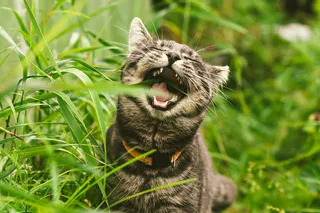A simple white butterfly caterpillar (Pieris rapae) nibbles blissfully on a cabbage leaf, completely unaware of the complex interspecies interactions he has just set in motion. The cabbage, displeased with the damage the caterpillar is doing to its tissues, is releasing volatile compounds into the air, hoping to attract parasitoid wasps like Cotesia glomerata, which use caterpillars like the one eating through the cabbage's precious leaves as incubators for their larvae—and succeeds. Drawn by the compounds wafting off of the damage plant, a female wasp arrives and finds the defenseless caterpillar. Using a needle-like appendage, she injects her eggs into the caterpillar's body, and her larvae hatch and feed on the caterpillar's internal organs one by one, carefully selecting the least important so that their meal survives as long as possible. Finally, when they are ready to pupate, the wasp larvae tunnel out, and through a chemical trick, convince their ...
Plant's Cry For Help Attracts The Wrong Crowd
Discover how Cotesia glomerata parasitoid wasps connect with plants and caterpillars in complex interspecies interactions.
More on Discover
Stay Curious
SubscribeTo The Magazine
Save up to 40% off the cover price when you subscribe to Discover magazine.
Subscribe












